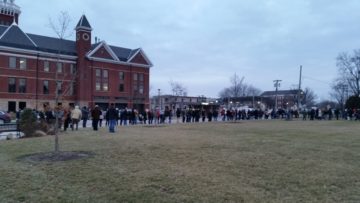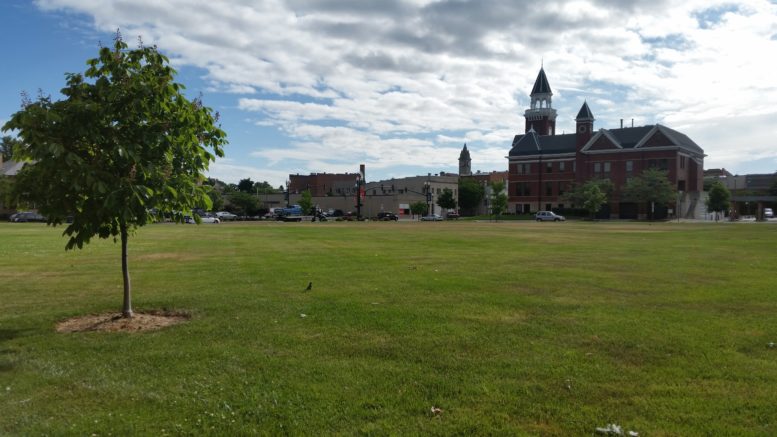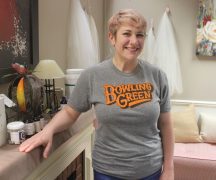By JAN LARSON McLAUGHLIN
BG Independent News
While the city was discussing its plans for the green space downtown, the community was already making use of it.
During the past few months, the open space that once housed the junior high has been used for community gatherings to mourn victims of a mass shooting at a gay nightclub in Florida, to unite against an immigration ban, and to offer a peaceful alternative to a pro-gun march.
Those uses fit in perfectly with the plans for the 1.7 acres, according to Eric Myers, chairman of the steering committee for the site.
“We would certainly encourage that,” Myers said Monday. “It’s a great use for the space.”
Last fall the Bowling Green City Council, with the support of Mayor Dick Edwards, approved the use site at the corners of West Wooster and South Church and South Grove streets as a developed green space. At that time a steering committee was formed to shepherd the development of the space. While independent from the city, the group has received support from the city administration, the mayor and council, Myers said.
The Green Space Steering Committee members are all volunteers who previously served on the Green Space Task Force. In addition to Myers, they are Larry Nader, Dick Newlove, Michael Penrod, Lloyd Triggs and Lori Young.
The steering committee has been meeting since December, primarily organizing a committee structure and developing a plan. The committee has created a loose time frame for the completion of the project.
It is hoped that fundraising for the green space will begin in April, with the possible groundbreaking in the fall. The project is expected to be completed no later than the fall of 2018. “We’d certainly like it before that,” Myers said.

Line to sign petition against immigration ban stretches down Church Street in the city’s green space earlier this week.
The task force presented a plan for the space more than a year ago. Then they waited as council debated whether or not to place a city building on the same 1.7 acres. Public pressure pushed for the site to be used solely as a town square.
Both the City Planning Commission and the City Council approved a design for the space and the steering committee is determined to keep that design, Myers said. Included in the design are gateway entrances at the corners on West Wooster, a central floral area and a gazebo.
The gazebo will work as a speaking platform that could be used in future community rallies, Myers said. The area will also be available for many other community uses, such as Friday afternoon gatherings and bandstand performances.
The task force’s plan also calls for a multi-purpose commons space with wide walkways leading to a large gathering space. The space would include street lighting that would match the rest of the downtown lights, benches, shade options of either sails or umbrellas, a defined brick entrance on the northeast and northwest corners, bicycle racks and trees.
It is estimated that the cost of the completed project is between $250,000 and $300,000.
The city has already spent $497,401 on the site, with almost all of that used to demolish the former junior high. From here on out, it will be the community’s job to pay for the gathering place. No city money, other than in-kind work, will be used to build the site, Myers said.
The fundraising committee will work to secure grants and collect donations for the project. The temporary name for the site will be “Wooster Green,” though that may change later, Myers said.
Two committees are in the process of being formed. The marketing and public relations committee will be co-chaired by Ann-Marie Lancaster and Bob Callecod. The group has begun to develop materials for the fundraising effort. The fundraising committee chairperson will be named in a few weeks, with Nadine Edwards agreeing to be the honorary chairperson.





